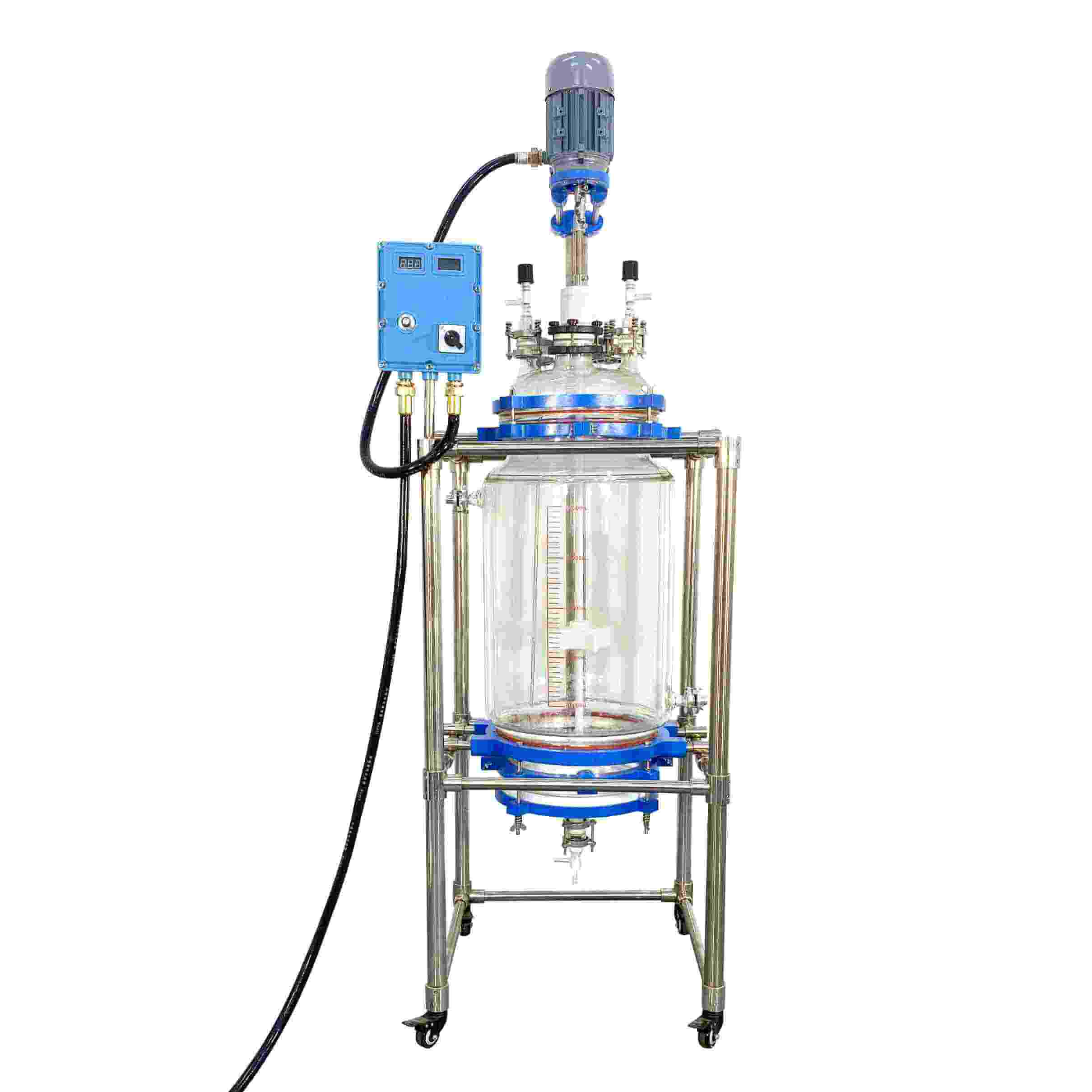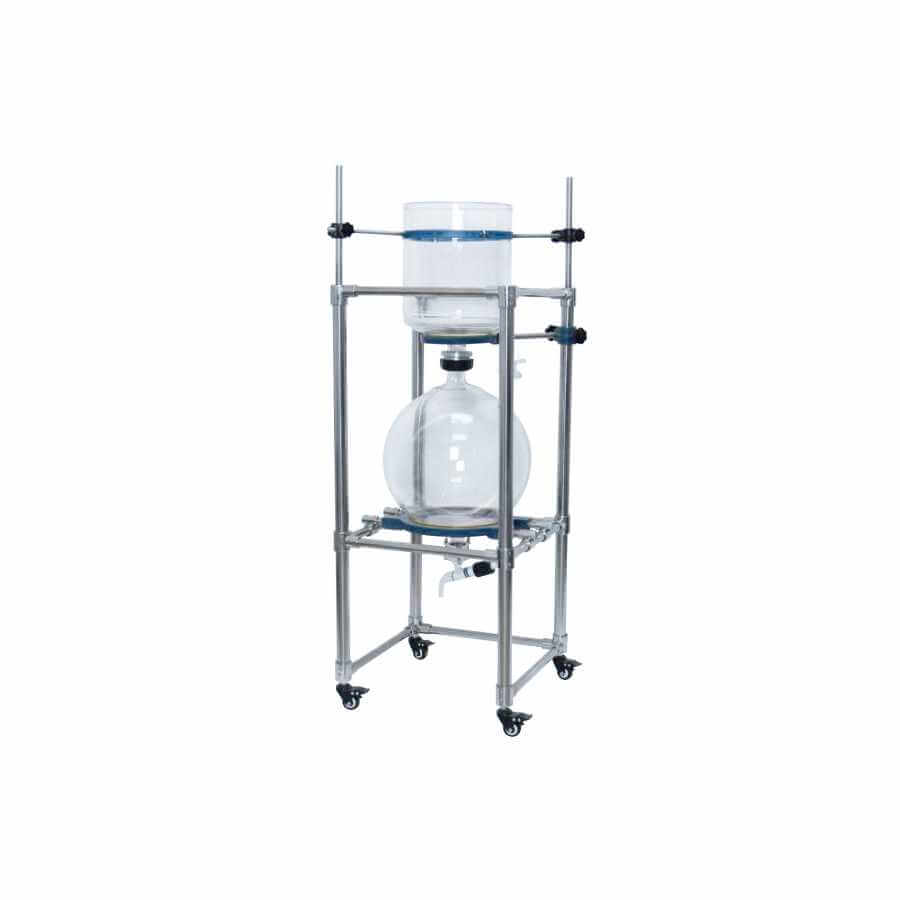

Glass Reactor
Glass reactors: used in chemical reactions, drug research and development, fine chemicals, food manufacturing, and other fields.
Material
glass
Capacity (L)
10-10000+
Mixing system
anchor, paddle, frame and others
Heating system
electric heating, oil heating and others
RUNGYU glass reactors are commonly used biochemical instruments and are widely used in modern fine chemicals, biopharmaceuticals, scientific research and experiments, and other industries. They can be used for concentration, distillation, reflux, separation, and purification reactions under the conditions of constant speed, constant force, and constant temperature. It is an ideal equipment for teaching, experiment, pilot test, and production.
Request a quoteThe double-layer glass reactor does not participate in liquid circulation but is only mechanically connected. Regardless of the liquid circulation temperature, the medium temperature must be lower than 60 degrees. Double-layer glass reactors generally do not absorb water vapor at low temperatures and do not produce oil mist at high temperatures. When the temperature reaches 200 degrees, the cooling capacity ranges from 1KW to 80KW, and the entire circulation system does not use mechanical or electronic valves.

Double-layer glass reactor temperature control system
1,The double-layer glass reactor is equipped with an integrated heating and cooling container, which has a large heat exchange area, fast heating and cooling speed, and a relatively small demand for thermal oil.
2.The double-layer glass reactor can realize continuous temperature rise and cooling. It adopts compressor technology and operates under high temperatures and high pressure. From 200 degrees, the compressor can be directly turned on for refrigeration to improve the energy efficiency ratio.
3.It has an external circulation and internal circulation temperature probe PT100 calibration function.
4.Use refrigerants that do not contain CFC and HCFE.
5.Precisely control the speed of chemical reactions.
6.The entire cycle is sealed, no oil mist evaporates at high temperatures, and the thermal oil will not oxidize or brown; at low temperatures, it will not absorb water vapor in the air; extending the service life of the thermal oil.
7.The double-layer glass reactor has safety functions such as self-diagnosis function, freezer overload protection, high-pressure pressure switch, overload relay, thermal protection device, etc. to fully ensure the safety of use;
8.Temperature adaptive control: During the control process (such as the chemical reaction process), the adaptive control system continuously adjusts PID parameters to enable the process to better control temperature and response time. This process is achieved by effectively measuring temperature, temperature change, and temperature change rate in multiple directions.

Maintenance of double-layer glass reactor
1.Before using the double-layer glass reactor, you should carefully check the instrument, check whether the glass bottle is damaged, whether the interface is consistent, and be careful to handle it with care.
2.Wipe each interface with a soft cloth (you can use a napkin instead), and then apply a little vacuum grease. (Vacuum grease should be covered after use to prevent lime and sand from entering.)
3.The interfaces of the double-layer glass reactor should not be tightened too tightly and should be loosened regularly to avoid long-term locking causing the connector to become stuck.
4.First turn on the power switch of the double-layer glass reactor, and then let the machine run from slow to fast. When shutting down, the machine should be brought to a stop and then the switch should be turned off.
5.Do not tighten the PTFE switches everywhere, as this can easily damage the glass.
6.After each use, use a soft cloth to wipe off any remaining oil stains, stains, and solvents on the surface of the machine to keep the machine clean.
7.Unscrew each PTFE switch after parking. The PTFE piston will deform if it continues to work for a long time.
8.Clean the sealing ring regularly. The method is: to remove the sealing ring, check whether there is dirt on the shaft, wipe it with a soft cloth, then apply a little vacuum grease and reinstall it to keep the shaft and sealing ring smooth.
9.Water must not enter the electrical part, and it is strictly prohibited to get damp.
10.Double-layer glass reactor must purchase original accessories. Use of other accessories at will will cause fatal damage to the machine.
11.When repairing or inspecting the double-layer glass reactor, the power and water source should be cut off first.




